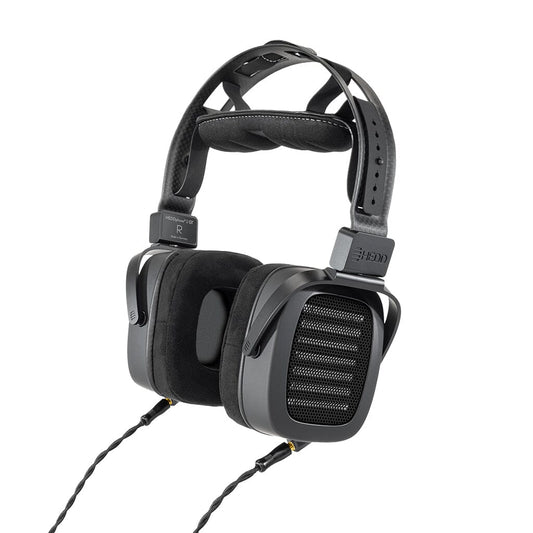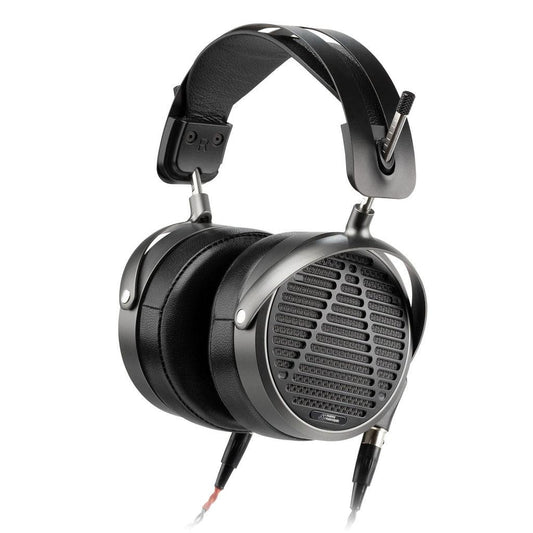HEDDphone Two GT: This Headphone is Underrated
Most kilobuck headphones opt for vivid colorations at the expense of neutrality, but HEDDphone Two GT is among the most natural-sounding flagship headphones in today's market. But does it balance its neutrality with enough excitement to capture the attention of high-end buyers? Join listener as they break it down.
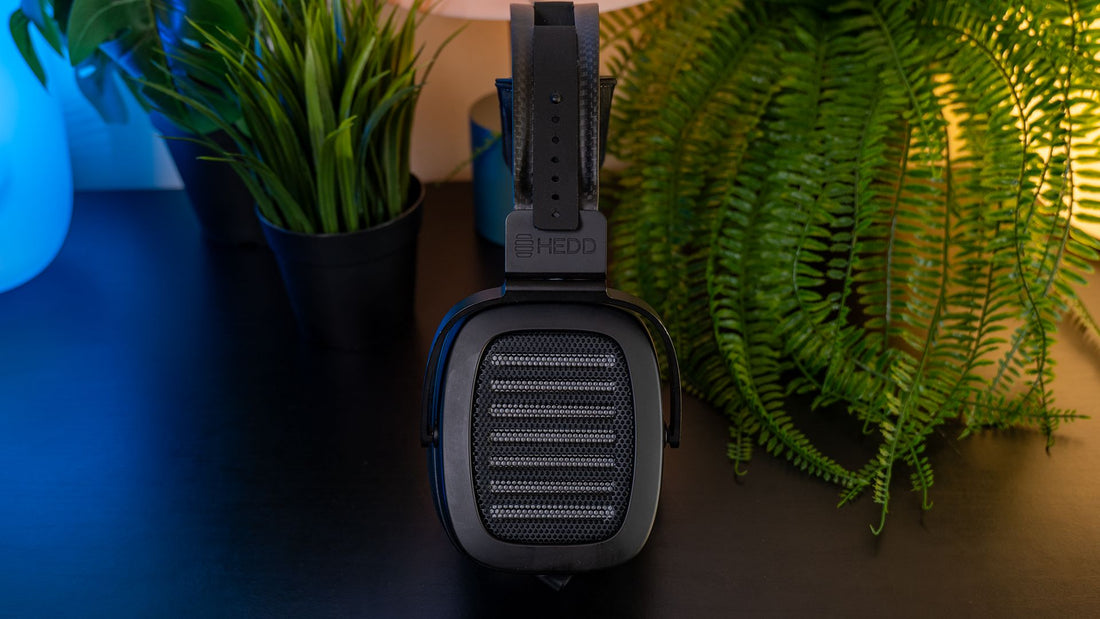
I don’t typically like “flagship” headphones. Most headphones I’ve encountered over $1000 tend to have colorations in the midrange and treble that—while they highlight certain nuances audiophiles love to focus on—always seem to make my favorite music sound a bit weird. However, the HEDDphone Two GT is probably the first headphone I’ve encountered where the overall sound fits firmly within the realm of “normal,” while still having colorations peppered throughout that I think will excite listeners who expect a more enhanced, vivid, “expensive” sound from a headphone of this price.
For that reason, HEDDphone Two GT might be my favorite of the “flagship” headphones that are currently available on the market. While it’s not a perfect headphone, I think it’s one that’s currently being slept on pretty hard.
So let’s talk about why I think the balance it strikes is among the best I’ve seen in this stratospheric price category, and what I think the HEDDphone Two GT could still do to improve.
What we like
- Solid balance between timbral fidelity and other subjective sonic aspects
- Amazingly complete accessories package
- Headband allows for customizable clamp force
What we don’t like
- Headstrap comfort is fairly poor due to a stiff headpad
- Tone still has a few idiosyncrasies that may bother more sensitive listeners
- Subjective performance may not be quite as electrifying as other, more colored headphones
HEDDphone TWO GT
Build, Comfort, Design, and Accessories
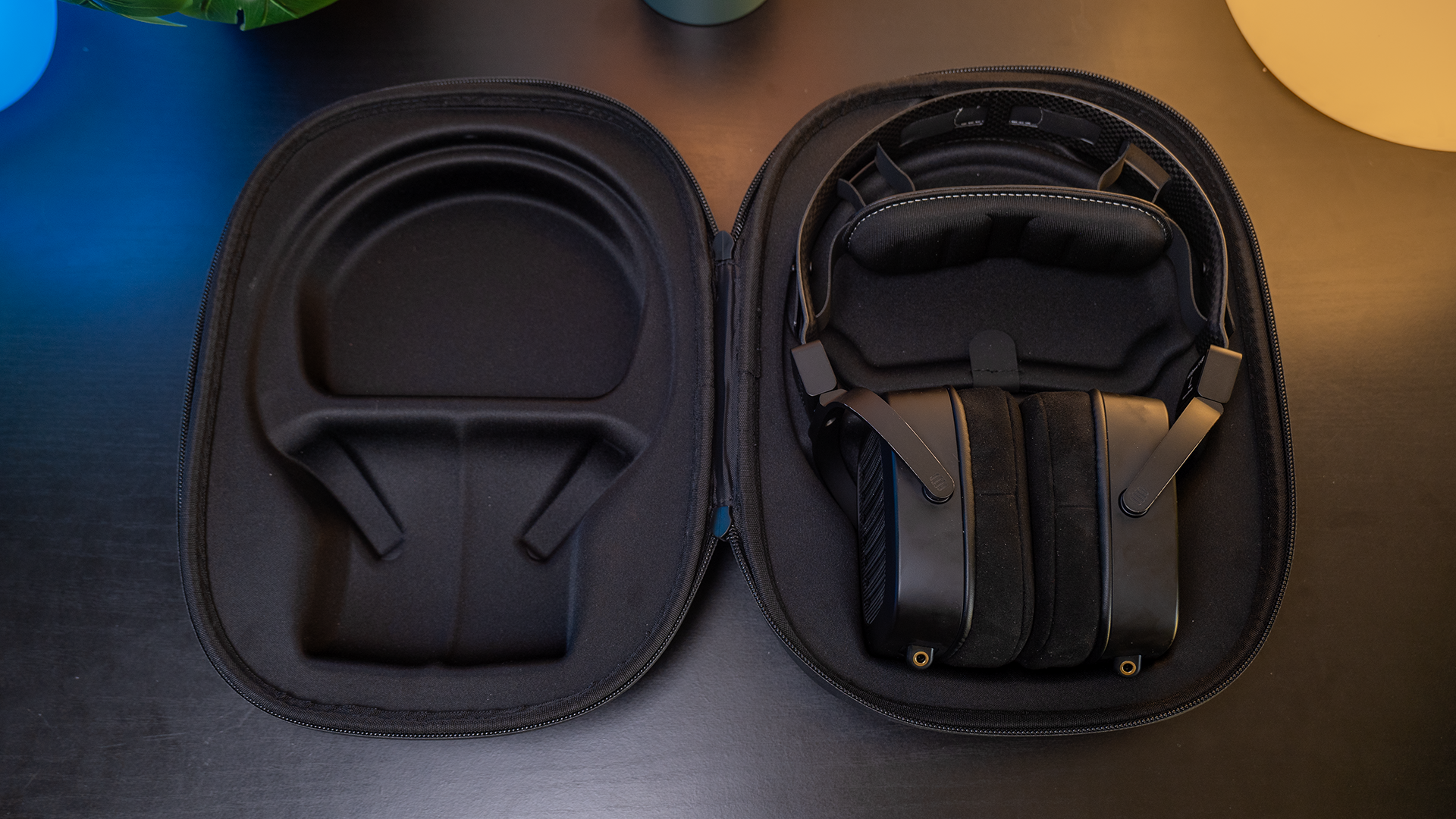
Starting with the accessories, this is where the HEDDphone Two GT is likely to impress basically anyone who happens to open the box. Buyers are greeted with two compartments, one for the headphone and its large-but-reasonably-portable hardshell carrying case, and another for the rest of the accessories. Buyers receive two cables—6.3mm TRS single-ended and 4.4mm Pentaconn balanced—as well as adapters to 3.5mm TRS and 4-pin XLR respectively, and a pair of extra earpads.
These cables are probably the best I’ve ever received stock with a pair of headphones. They’re incredibly soft, compliant, and ergonomic braided fabric cables with, from what I can tell, very well managed microphonics and no cable memory, and the aforementioned adapters share the same construction. These cables are an absolute joy to handle and use, and I only wish for every other headphone company to take notes: this is how you do stock cables.
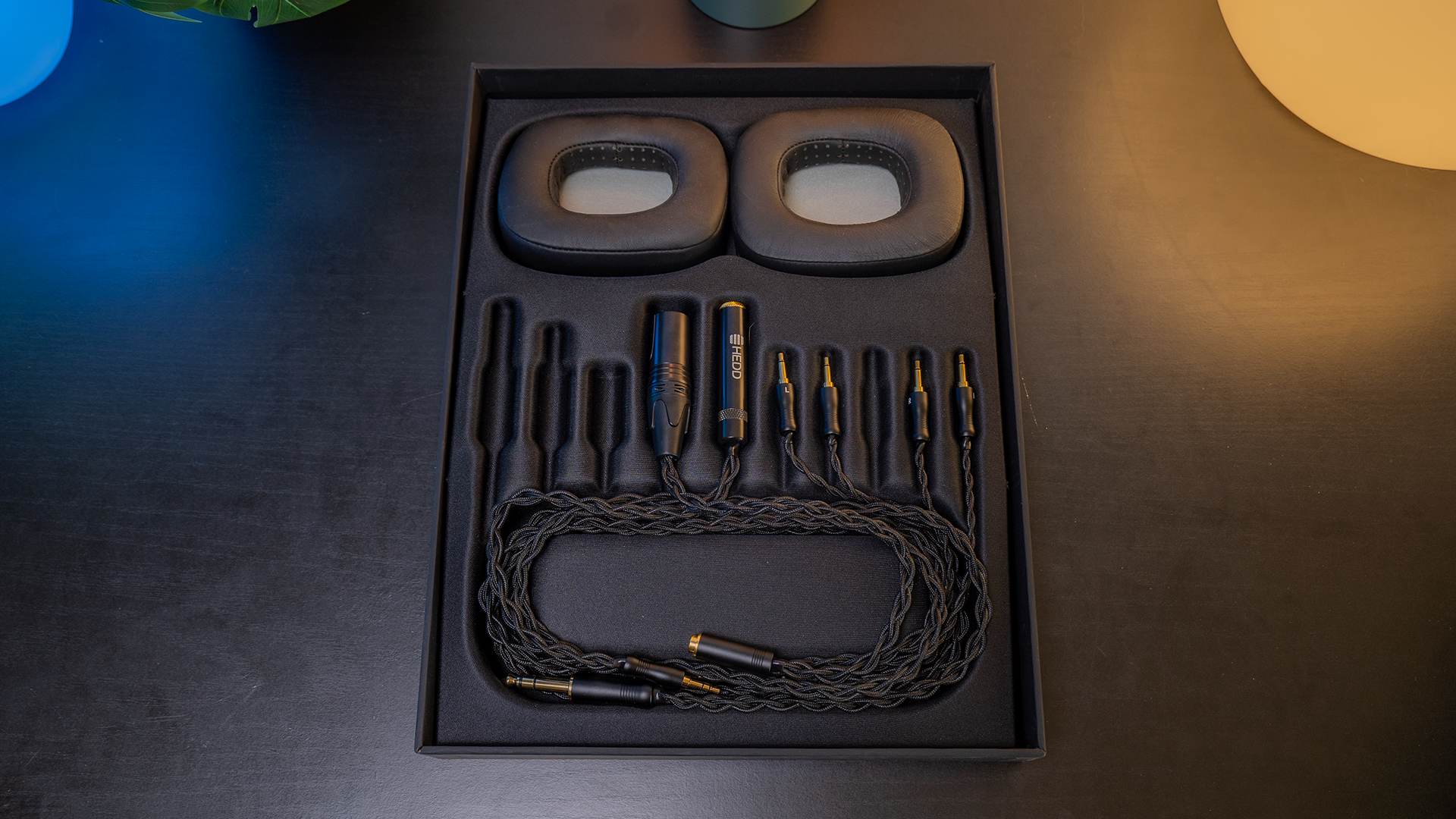
One novel thing about HEDDphone TWO GT is that it comes with a pair of leather pads as well as a pair of suede earpads, but HEDD also has a trick up their sleeves with these. While for most headphones, a change in earpad material will have fairly dramatic effects on the sound, with the HEDDphone Two GT the difference is barely noticeable at all.
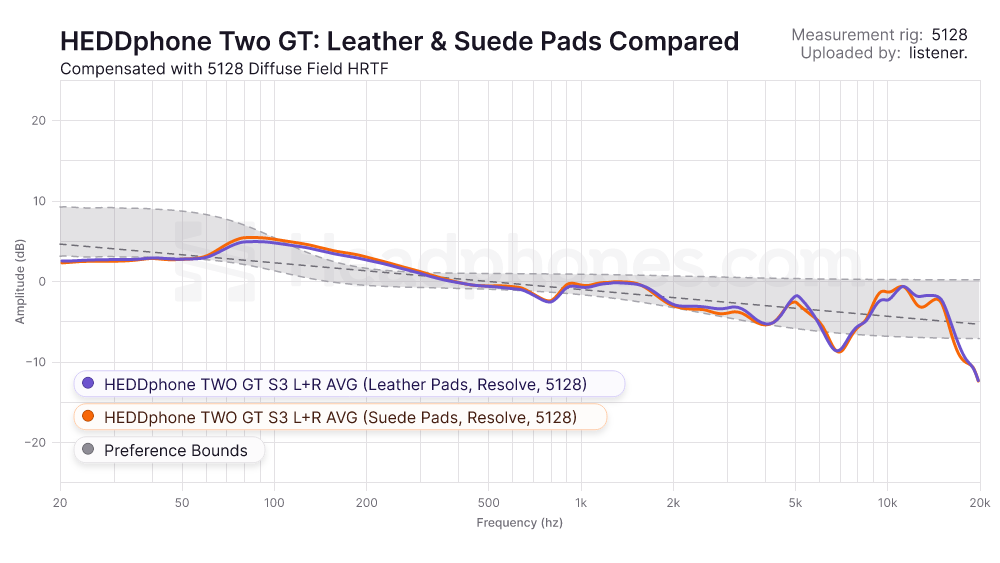
Either when measured or when worn, the only differences I can surmise are extremely minor treble differences, so I would say because the difference is so minor, there’s really only one thing the buyer needs to consider: Which one is more comfortable? For me, the suede is more comfortable, so that’s what I’ve decided to wear for this review.
I may be in the minority here, but I also love the visual design of this headphone. The black colorway, the slim overall front-to-back profile, and the small rectangular earcups with the grille peering in to see the Air Motion Transformer drivers HEDD is known for, all add up to a headphone that looks pretty damn cool on a stand or on a desk… if not quite as cool when worn on the head thanks to a large headband arc.
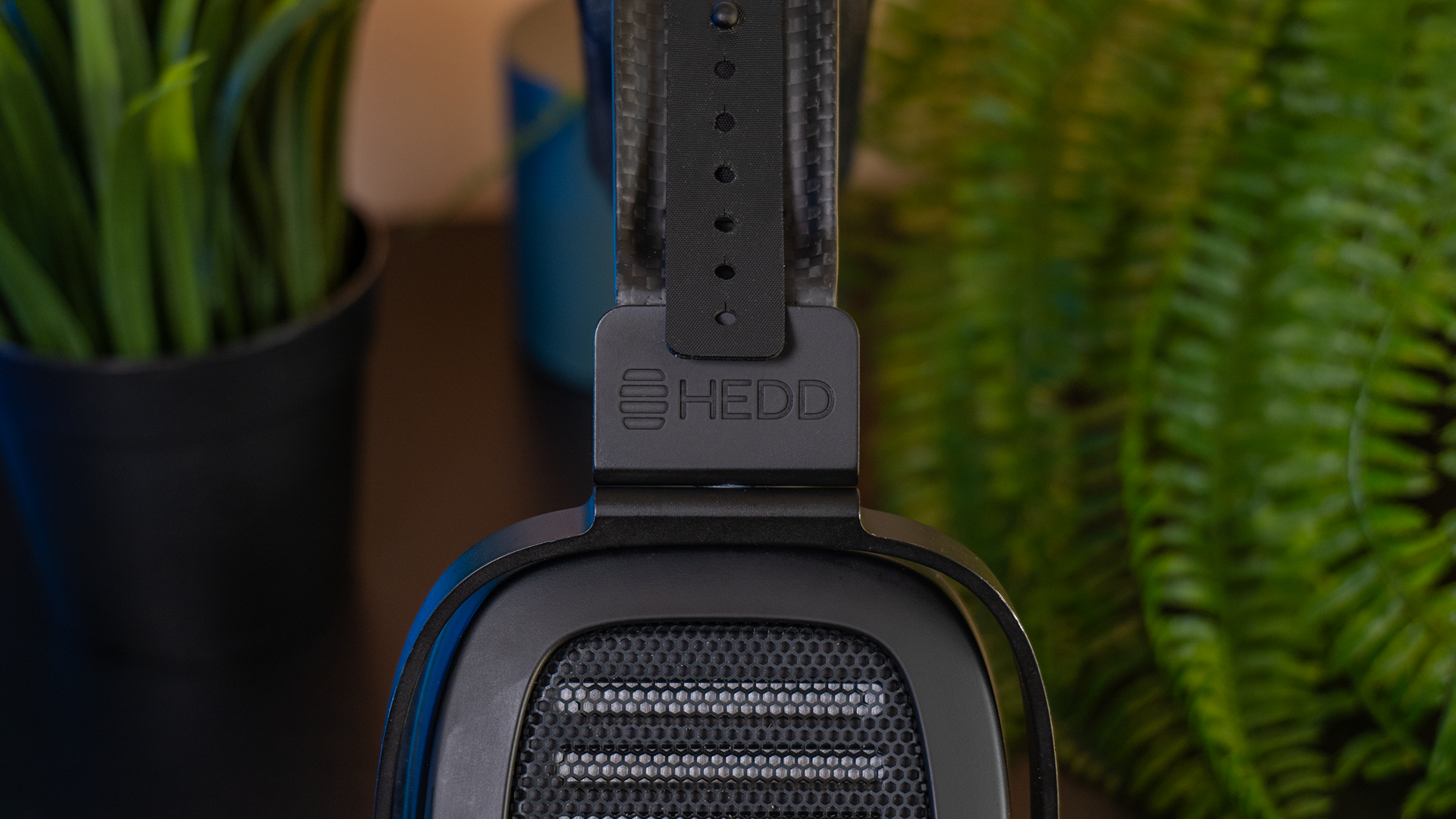
However, the accessories and visual design are where the praise must end, because there are also some unfortunate design choices made here—the most glaring of which has to do with the headband. While I commend HEDD for trying something truly unique and offering a two-point adjustment system for headstrap height and headband clamp force, this system has two pretty glaring flaws.
For one, it’s not immediately apparent which strap adjusts clamp and which adjusts headstrap height, which means at trade shows and meets like CanJam where most people are going to hear this headphone for the first time to decide whether or not its worth buying, they either just put the headphone on their head and deal with subpar fit, or get lost in fiddling with the headband for valuable minutes and still often end up with subpar fit. It’s an unintuitive system.
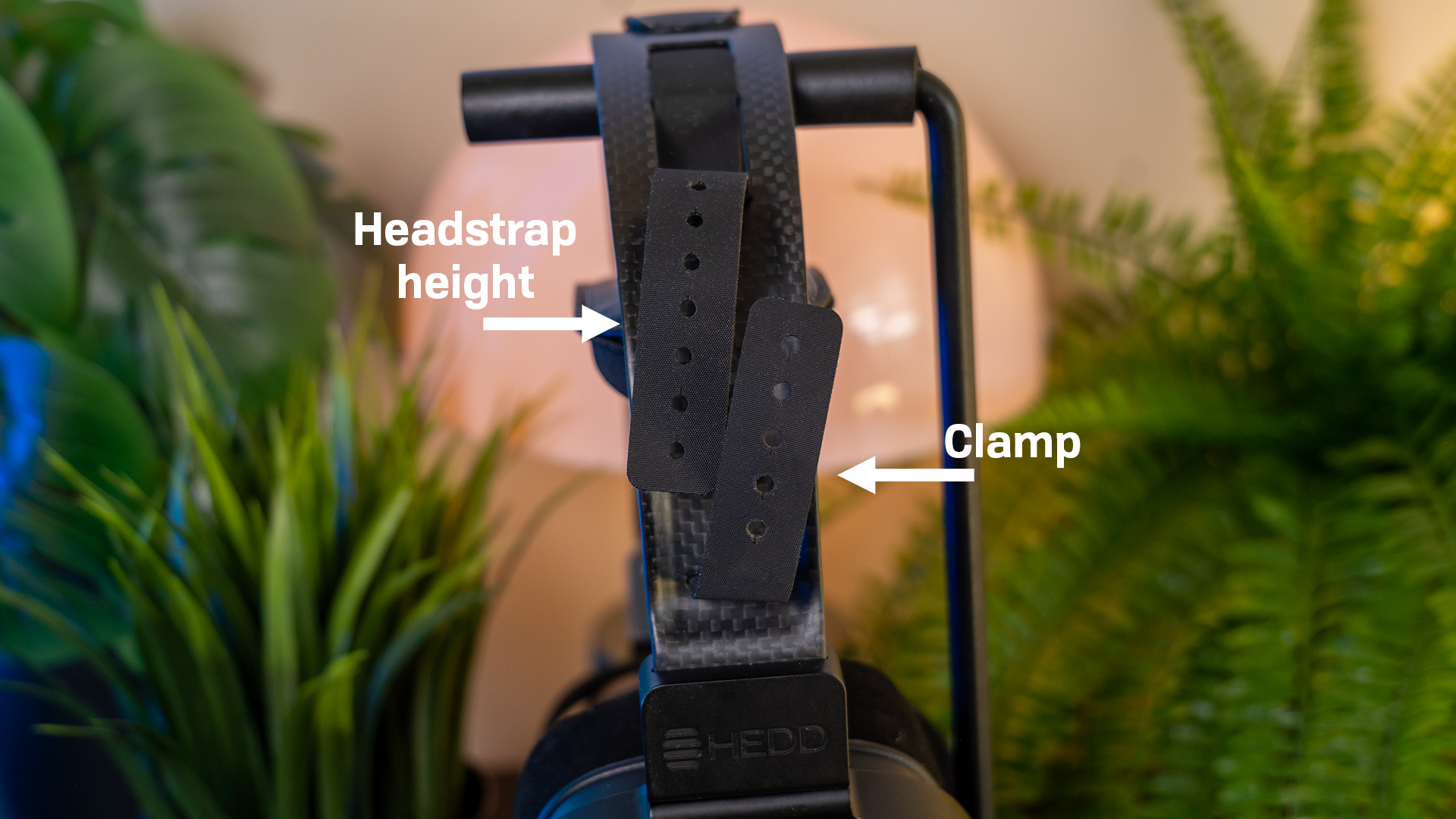
The bottom set of straps that lead to the sides of the headpad control clamp, and the straps on top of the headpad that lead to the top of the headband adjust height. My ideal configuration was actually to nearly max out the clamp (I like a secure fit) and raise the headpad height to the second-highest configuration.
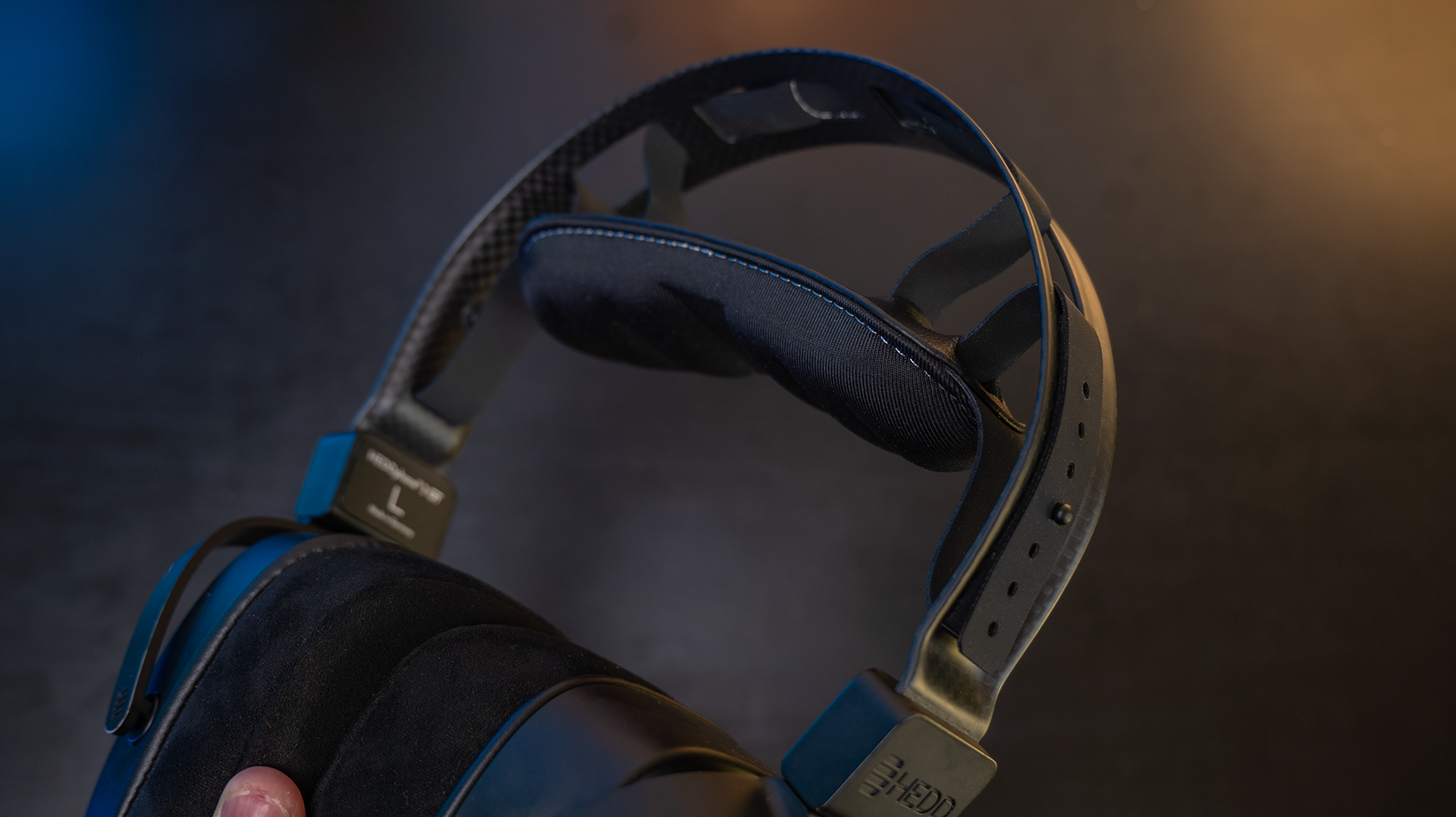
The second flaw with this headband, and possibly the most glaring issue, is that the headpad they opted to use for this is simply not comfortable. It’s made of a rigid, non-compliant memory foam lightly segmented into a few chunks. Instead of conforming to the shape of my head, it just kind of sits on top of it on a small contact point, which means top of head comfort for me with this headphone is quite poor, and I typically need to reposition after 30 minutes or so. This would’ve been much better if the headpad had more surface area and/or was more compliant to the shape of the head.
Lastly, I noticed a slight creaking when it came to rotating the cups around the Z-axis to adjust to the tilt of my temple/jaw, which wasn’t a huge problem when the headphone was already on my head, but happened whenever I’d put the headphone on to start listening. Just a minor nitpick, but one I noticed consistently.
Overall, HEDDphone Two GT has incredible accessories, a handsome visual design, and a headband that, while innovative, stumbles enough that I think certain parts absolutely need to be addressed before they release another headphone. Now let’s talk about sound.
Sound

Starting with the bass, we immediately see something that sets the HEDDphone Two GT apart from most other high-end headphones. It neither has the “linear” bass of Hifiman or Audeze’s planar magnetic designs, nor the “rolloff + mid-bass bump” of Focal or Sennheiser’s dynamic driver designs. Instead it has a mix of the two, incorporating a wide-band elevation in the upper-bass with linear bass extension.
The effect of this tuning choice is that the presentation lands somewhere between the enveloping sub-bass presence of the planar magnetic designs and the expressive “thump” of the dynamic driver designs. The HEDDphone Two GT displays kick and snare drums with more largesse than with dynamic driver designs, while having considerably more weight and punch than basically any planar I’ve heard short of Hifiman HE6 or Audeze LCD-4.
While it has what I’d call a mild excess in the 200 Hz band for my taste, this forwardness also has positive effects on bass texturing. Because the area under 80 Hz or so is actually reduced relative to the upper-bass, but still linearly extended, HEDDphone Two GT often emphasizes the early overtones of bass instruments in a way that sounds uniquely throaty and filled-out while not sounding bass-light or lacking in low-end extension.
However, for some harmonically-simple bass instruments, this excess does come across as a little too bloomy, so be aware that while this coloration does have positive effects it brings to the table, it is still a coloration that deviates from what I think many may call neutral, and may be overbearingly warm for some recordings.
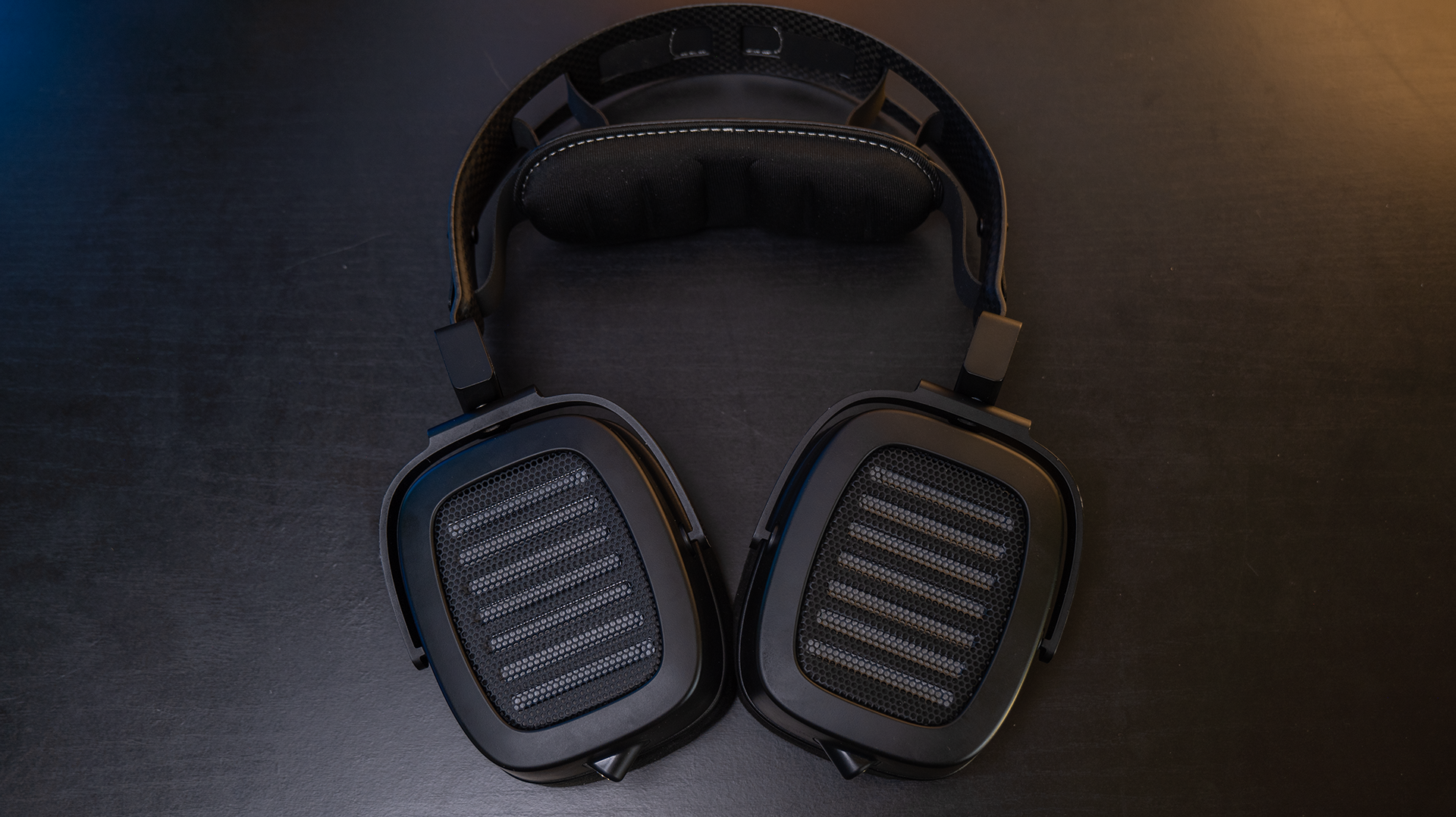
That being said, the midrange on this headphone is probably its biggest strength, as it both firmly fits within the realm of “neutral” while still offering a coloration in the 1-2 kHz band to balance the upper-bass bloom. This is where sets with a similar upper-bass coloration (Meze Empyrean, for example) kind of fail to provide balance and thus sound cloyingly warm or soupy. While the HEDDphone Two GT is firmly a “warm” headphone, the upper midrange boost it adds offers a welcomed offset to the warmth, adding texturing and “crunch” to bass instruments and vocals that would otherwise sound muffled.
Colorations aside, from a broad strokes perspective the HEDDphone Two GT pretty much nails the midrange—especially compared to most other headphones near this price which all seem to be much more colored. Vocals and pianos sound natural, with maybe a bit of extra glow and warmth to them. Guitars sound excellent, having the appropriate balance between body/cabinet resonance and pick attack, with maybe a bit too much relaxation at the tippy-top of their range. Bowed strings are portrayed romantically, with a little bit of extra softness instead of a hyper-precise “sheen” to the scratch of the bow gliding across the strings.
Finally the treble, where most over-ear headphones—especially those in this price range—are just straight up bad for me. HEDDphone Two GT still has some meaningful issues here, a little dark in some spots, a little bright in others, but I can’t help but feel like it chooses a really solid balance between these colorations and lands on something uniquely primed to appeal to both those who like colored headphones and those who like neutral headphones.
For starters, the HEDDphone Two GT’s low-treble has a mild 5 kHz peak which seems to change its gain slightly based on earpad choice as well as clamp force. Personally I don’t notice the elevation shown on our measurements at all, but some listeners may. If anything it’s a bit relaxed in the 5-8 kHz band overall for me, but I can typically handle a dark presentation.
However, because it has a darker mid-treble presentation, the HEDDphone Two GT’s peak around 9-11 kHz is a fairly noticeable coloration that seems to be carrying most of the presence or detail this headphone has to offer. While this is usually an area that bothers me in most headphones, and it’s still a bit of a bother here, I find it to be necessary to balance the otherwise quite warm/dark presentation that HEDDphone Two GT has, and honestly I think its one of the few headphones with an elevation in this band that actually seems to make sense with everything else.
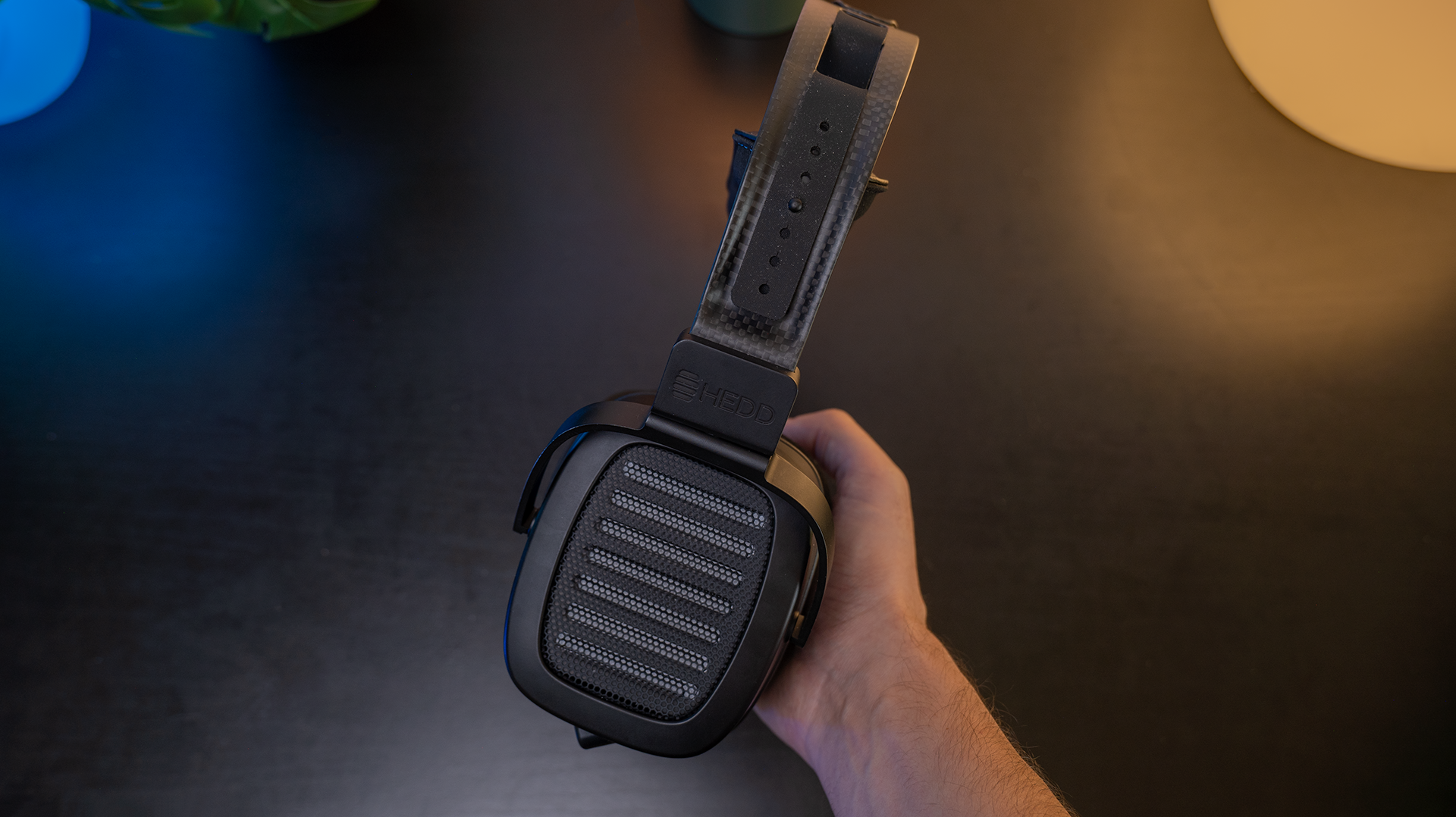
If HEDDphone Two GT weren’t overall warm, this resonance would absolutely define the timbre of the headphone and be much too harsh. But as it stands, it adds necessary breathiness and air to vocals, the right amount of sizzle to snare drums, and enough bite, crash, and glisten to cymbals so that even if the overall treble tuning isn’t a perfectly straight line, it doesn’t fall too far out of balance with the rest of the tuning here.
For those who are more “subjectively” minded than I, the HEDDphone Two GT’s slightly rocky treble response actually contributes positively to my impression of the spaciousness and “detail” this headphone has. Side-panned elements seem to drift just a little further out to the sides than normal, and the sense of small, missable cues like snare drum ghost notes or recording background hum coming forward is quite a bit better than headphones with a smoother treble presentation.
That said, if I could change anything about the HEDDphone Two GT’s sound, it would absolutely be the treble. I’d love it if there were quite a bit more mid-treble around 7-8 kHz and less around 11 kHz, as some vocal recordings still sound too sibilant or glassy. I also found while EQing in some 7-8 kHz that the texturing of the headphone dramatically improved for most elements while the cohesion between lower and upper treble seemed less jarring, even without touching upper treble.
Even if it’s not perfect though, HEDDphone Two GT is one of the few headphones I’ve encountered that I can say is both unapologetically colored while also successful in actually balancing those colorations so the headphone overall sounds pretty darn natural. It finds itself in a price category seemingly only occupied by strange sounding esoterica, and in that space it balances neutrality and excitement well enough to be what I’d call the least imbalanced sounding flagship headphone by a considerable margin.
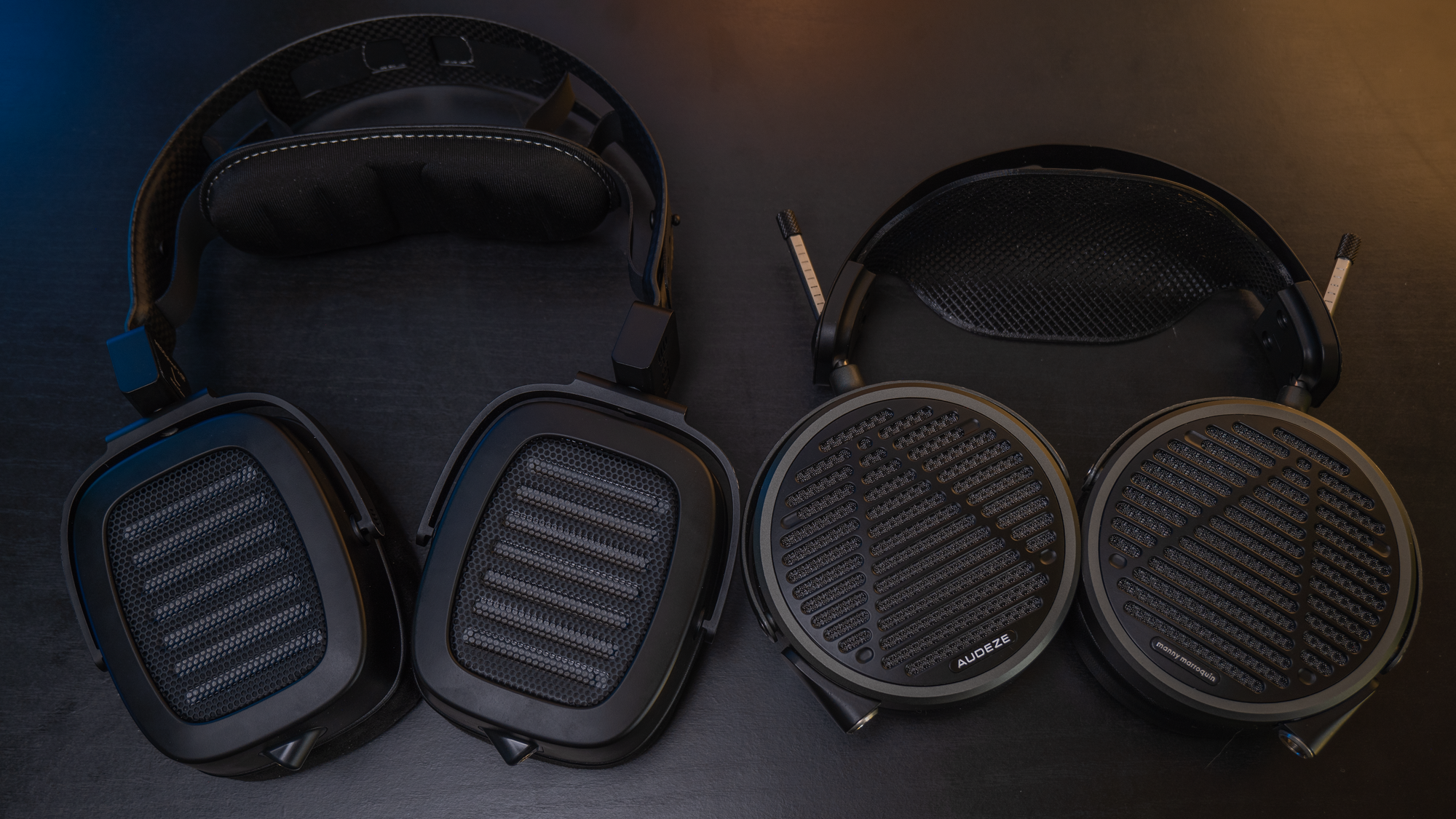
Vs. Audeze MM-500

The Audeze MM-500 is my other choice for “expensive headphone, but actually tuned well,” so it seems the obvious comparison point considering above its price point, I think headphones only get less neutral, not more.
While the MM-500 certainly still has a neutral midrange presentation, I find it’s too midrangey overall, lacking slightly in bass presence while lacking significantly in lower-treble presence. The MM-500’s main issue is that it sounds incredibly dull and soft, which paired with the midrange forwardness means that drum transients and guitar pick attack sound simultaneously a little too forward but also feathery and blurred. This, paired with its large excess of energy around 14 kHz on my head means it unfortunately looks more neutral in measurements than it ultimately sounds to me.
Audeze MM-500 Professional Headphones
The HEDDphone Two GT totally competes with the MM-500 when it comes to a balanced-sounding option in the high-end price category. For one, GT has a much more engaging bass profile, while still keeping it reined in just enough to not knock itself out of the conversation for neutrality. Its midrange is what I’d call equally competent; while it may look a bit less smooth, I find its midrange actually balances better with its bass and treble than MM-500’s does.
When it comes to treble, it definitely doesn’t have the same overwhelmingly blurry presentation that the MM-500 does in the lower treble, though there’s still a considerable lack of texturing in the mid treble. While I do prefer MM-500’s level in the 9-12 kHz band in isolation, overall I think the HEDDphone Two GT has a better integration to its tuning and a more exciting, dynamic presentation overall, and it’s an easy choice between the two when it comes to sound quality for me: HEDDphone Two GT takes this one.

Conclusion
Those familiar with my presence online or in our livestreams will know, I am absolutely not the target audience for headphones in this price range. Headphones above $2000 are almost all trying to “wow” customers with engaging, novel colorations that make them feel like they’re getting something uniquely capable or special, but what I’m usually looking for is something that minimizes those colorations and presents music as it is.
Which is why the HEDDphone Two GT is so interesting to me. As a high-end product, it succeeds at offering a distinct, flavorful presentation that checks a bunch of the boxes that high-end audiophiles are going to want checked. It has a unique spatial presentation, it hits hard, and the sense of detail extraction feels like it’s unearthing new aspects of the music.
But it does all of that, while also sounding pretty damn normal. Frankly, I think doing both with a delicate balance like this is way, way more impressive than solely offering one or the other.
While the headpad comfort represents a pretty major downside and there are still sonic issues that I’d fix if given the chance, I can’t help but feel like the HEDDphone Two GT represents one of the best balances between “fun” and “neutral” that currently exists in the high-end headphone market.
And for that reason, I think people would do well to consider HEDDphone Two GT in the same conversation as all of the other offerings in this price bracket from Meze, Hifiman, Focal, and Sennheiser. All of them may have their own exciting flavors, but in this reviewer’s opinion, none of them balance their colorations quite as well as HEDDphone Two GT does.
